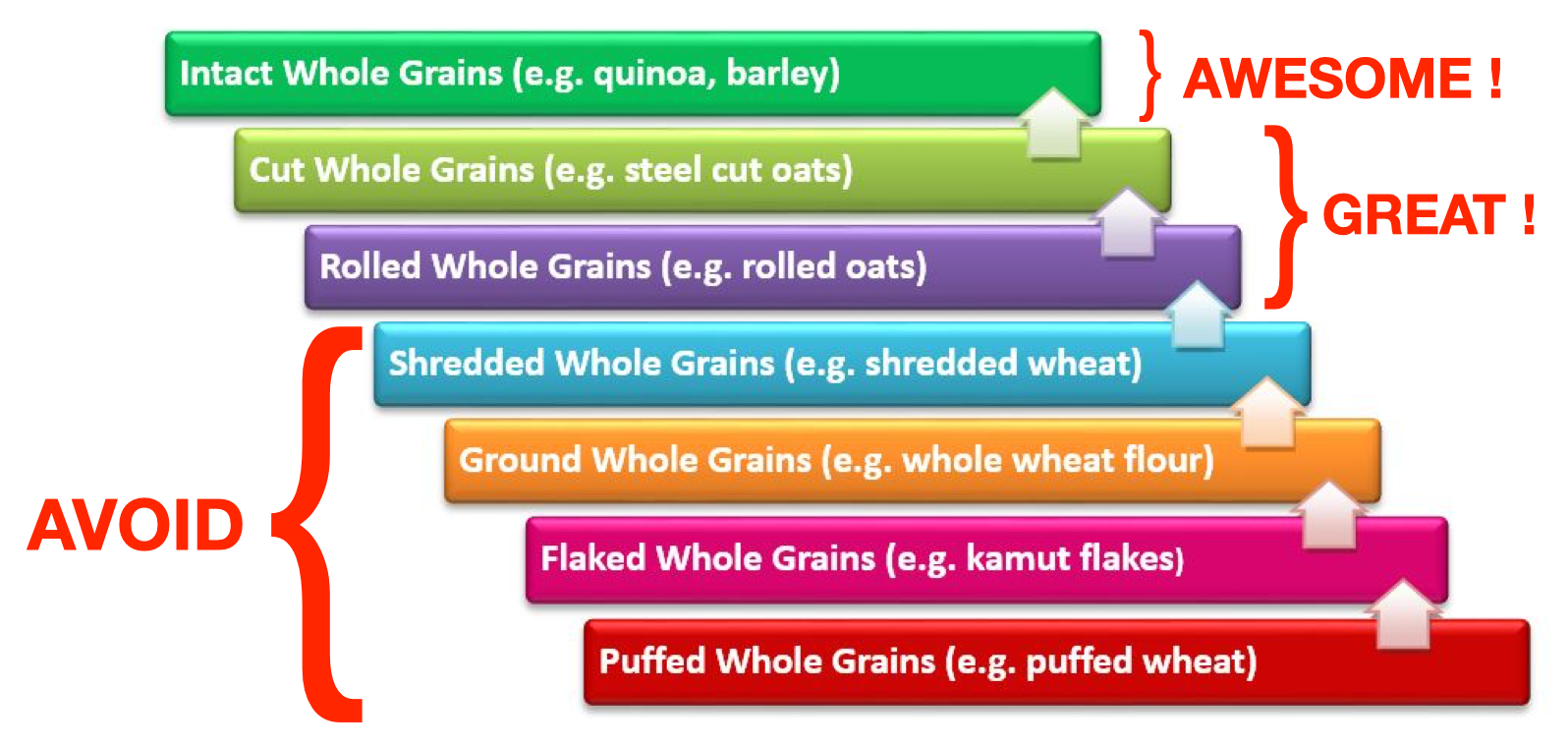Rolled whole grains are considered great! In fact, they are a favorite among Whole Food Plant-Based doctors for breakfast preparations. But flaked whole grains and shredded whole grains are to be avoided. We'll see the reasons in sections below.
What are rolled whole grains? Rolled grains are obtained by rolling the grains between two rollers so that the grains flatten. This process increases the surface area and decreases the cross-section of the grain, so rolled grains cook faster than intact whole grains. For example, oats are sold by Bob's Red Mill as Extra Thick Rolled Oats and Old Fashioned Rolled Oats. Both of them cook much faster than steel cut oats (an example of 'broken whole grains') or oat groats (an example of 'intact whole grains').
Rolled grains at home? A Grain Flaker (Amazon) may be used to produce fresh, rolled grains at home! This way, we can produce a variety of rolled whole grains, not just oats. Also, we can adjust the thickness of the final product.
Sprouted rolled grains: Sprouted grains may also be dried and rolled! If the grain is oats, the resulting product is sprouted rolled oats (Amazon). Are sprouted grains healthy? Yes! See How To Eat Whole Grains? Sprout Them!
Flaking vs rolling: The terms 'flaking' and 'rolling' are a bit confusing. From Wikipedia articles on flaked oats and rolled oats, my understanding is that 'flaking' refers to an industrial process which involves some heating, rolling, drying and fortification. However, rolled grains involve much less industrial processing. Flaked grains are thinner and crispier than rolled grains. They are often fortified. And they often have additives like sugar and salt too.
What is a flaking machine? Can we prepare rolled grains at home? Yes, we can easily convert intact whole grains into rolled grains at home with a machine which simply flattens the grains. To make things confusing, such a machine is often called a 'flaking machine' :-) So a flaking machine used at home actually produces rolled whole grains, not flaked whole grains as produced in an industrial setting.
Are flaked grains healthy? In the Whole Grains Hierarchy by Brenda Davis, flaked grains are in the 'Avoid' category. Why? Brenda Davis explains:
How is rice converted into 'poha'? In Hindi, flaked rice is called 'poha'. It is often prepared from white rice (degerminated rice or refined rice; not a whole grain) but it's possible to prepare brown rice 'poha' too. In either case, how is 'poha' produced in the industry? Summary of How is 'Poha' produced in a factory? (6 mins, Hindi):
A few other videos showing how poha is made: video 1, video 2 and 'poha' made in a village (non-industrial setting).
Are flaked whole grains like 'brown rice poha' healthy? The overall process described in the videos above involves soaking, roasting (cooking), drying etc. This makes 'flaked whole grains' like 'poha' a processed food which belongs to the 'Avoid' category in Brenda Davis' Whole Grain Hierarchy.
Shredded wheat (Wikipedia) is a specialized industrial process developed in 1893. The video below explains the process. Are shredded whole grains healthy? As per Whole Grain Hierarchy by Brenda Davis, shredded whole grains are to be avoided.
Brief summary: whole wheat undergoes cooking in water and steam, drying with hot air, shredding, rolling, baking, toasting, drying, and so on. Some shredded wheat is 'frosted' (layered with sugary syrup).

 Instagram
Instagram YouTube
YouTube